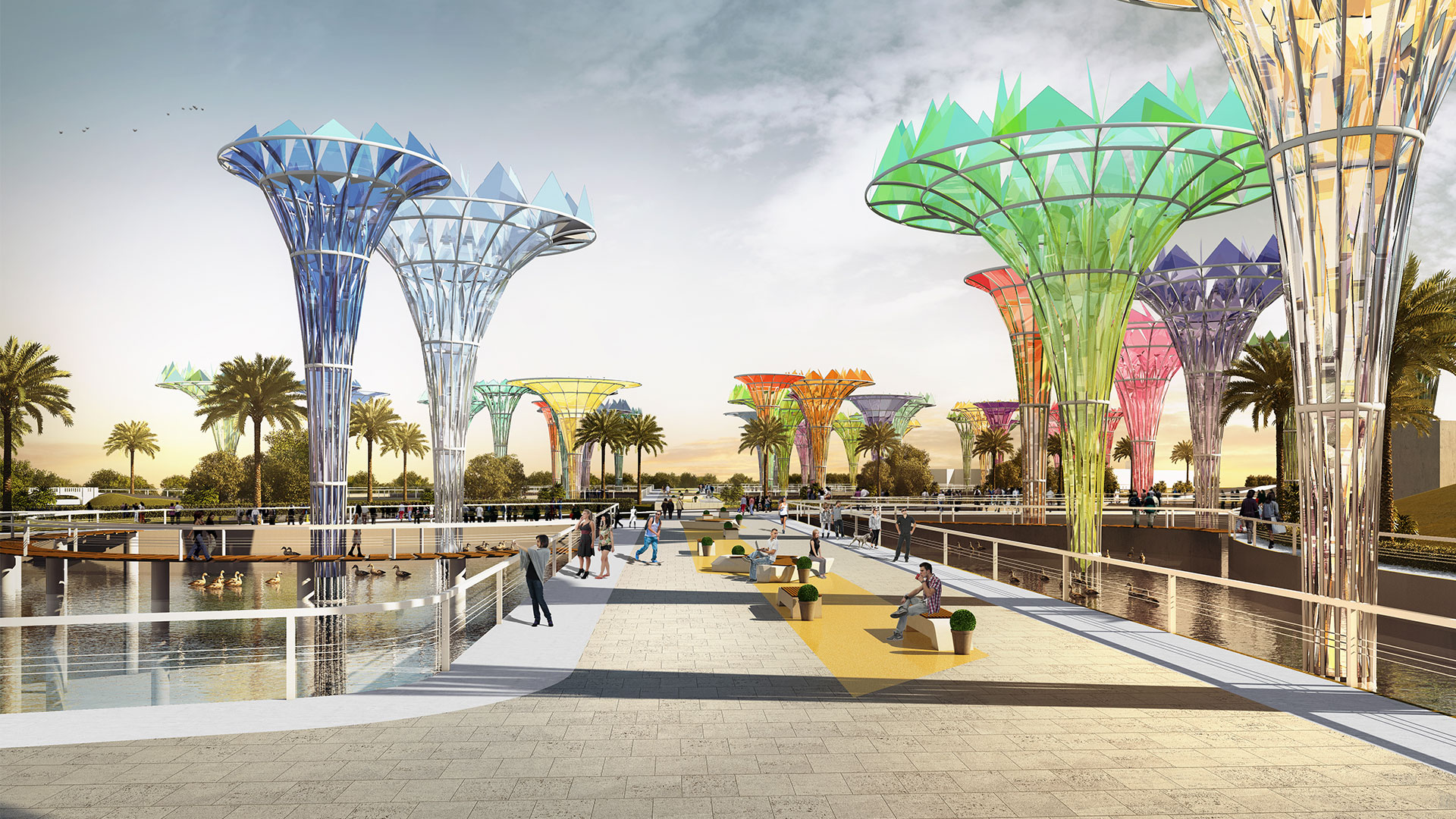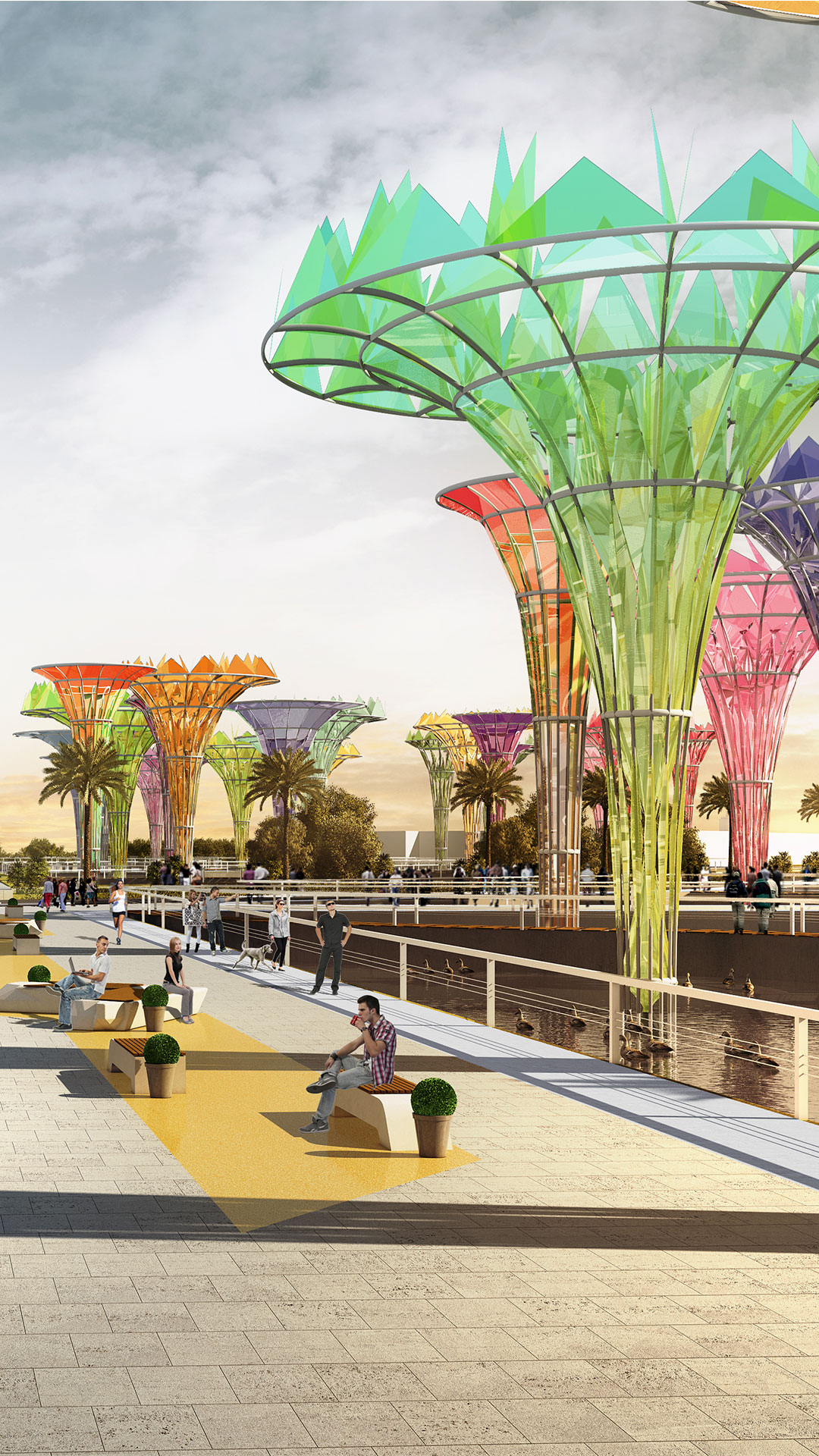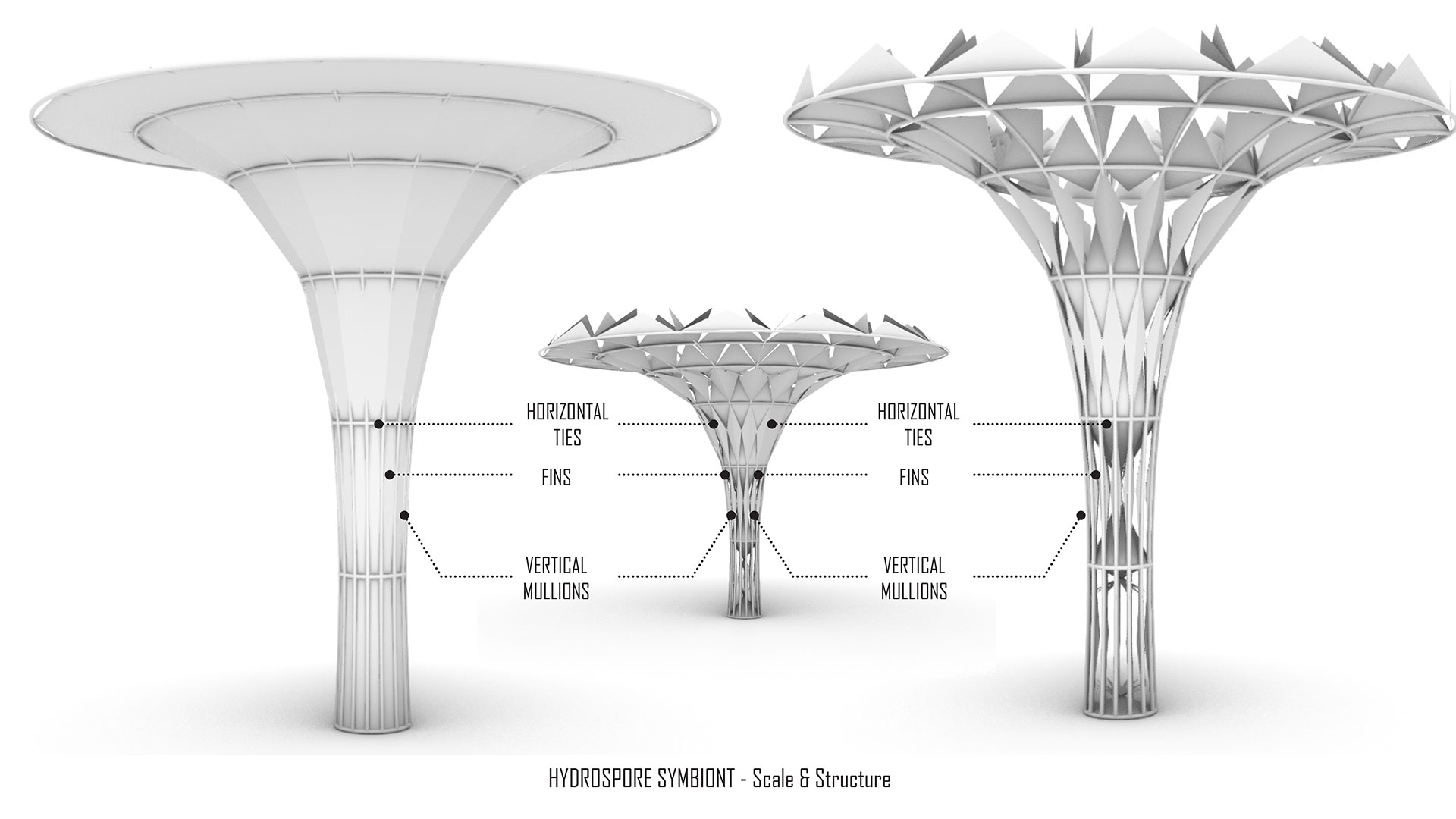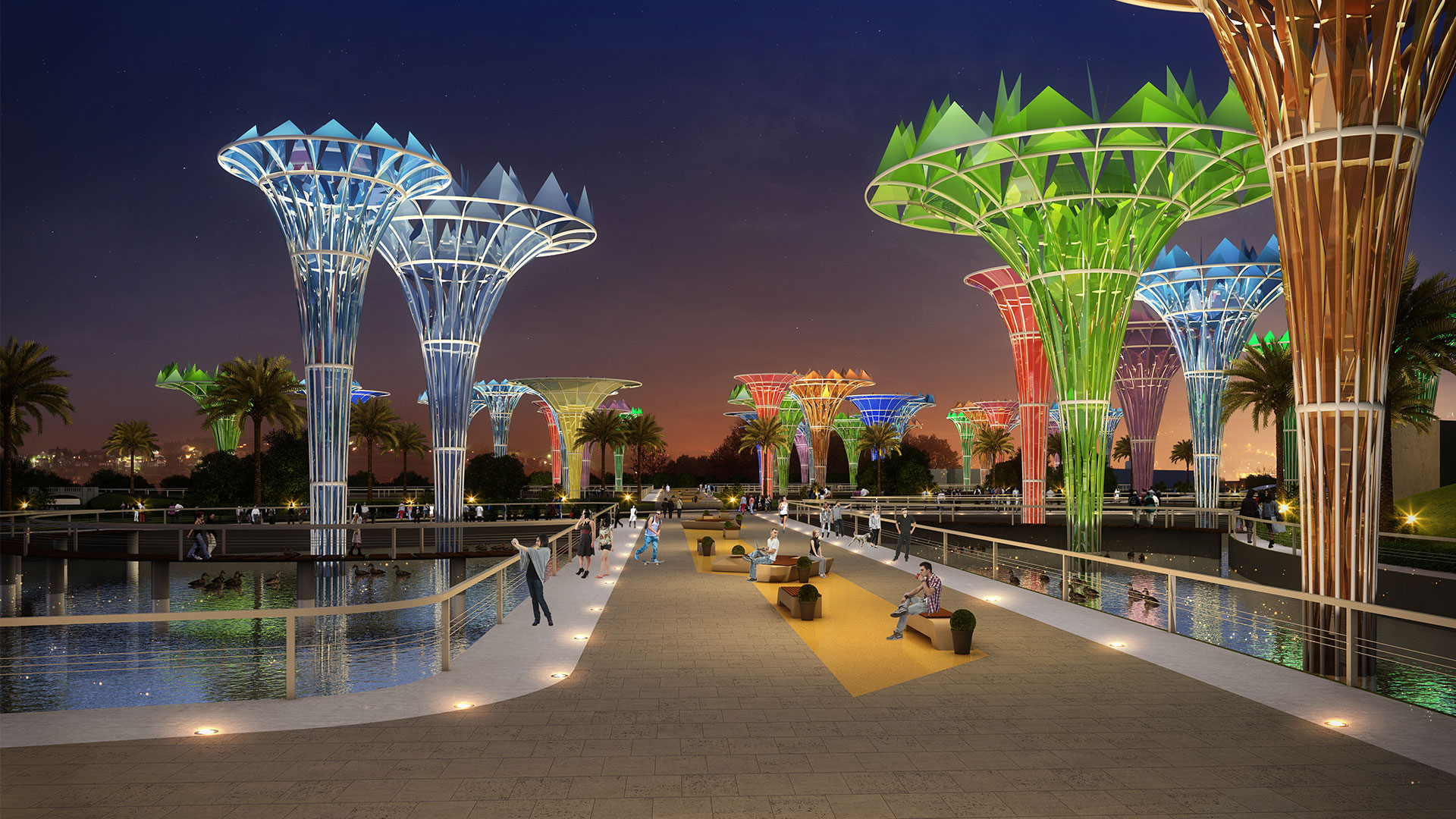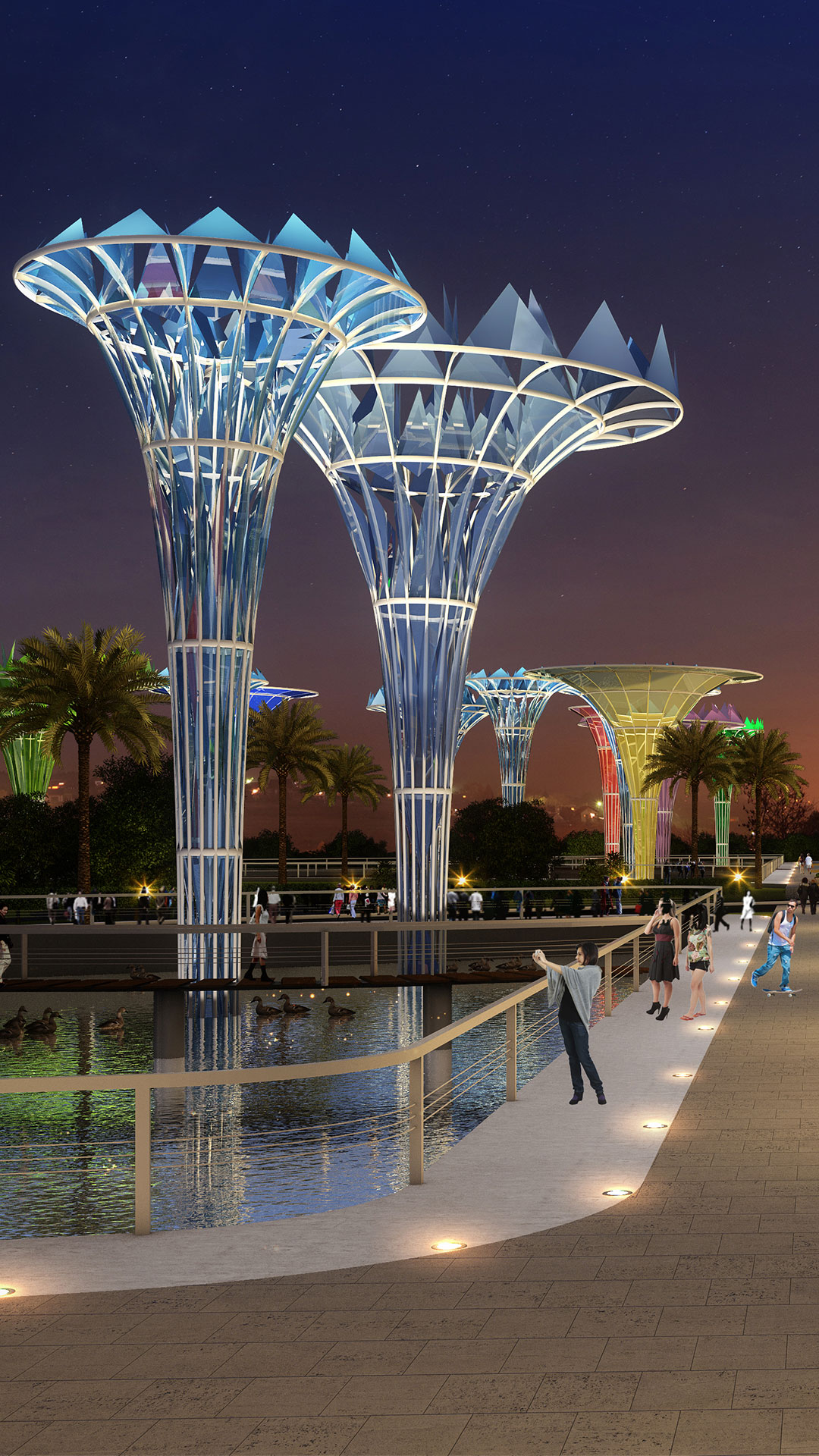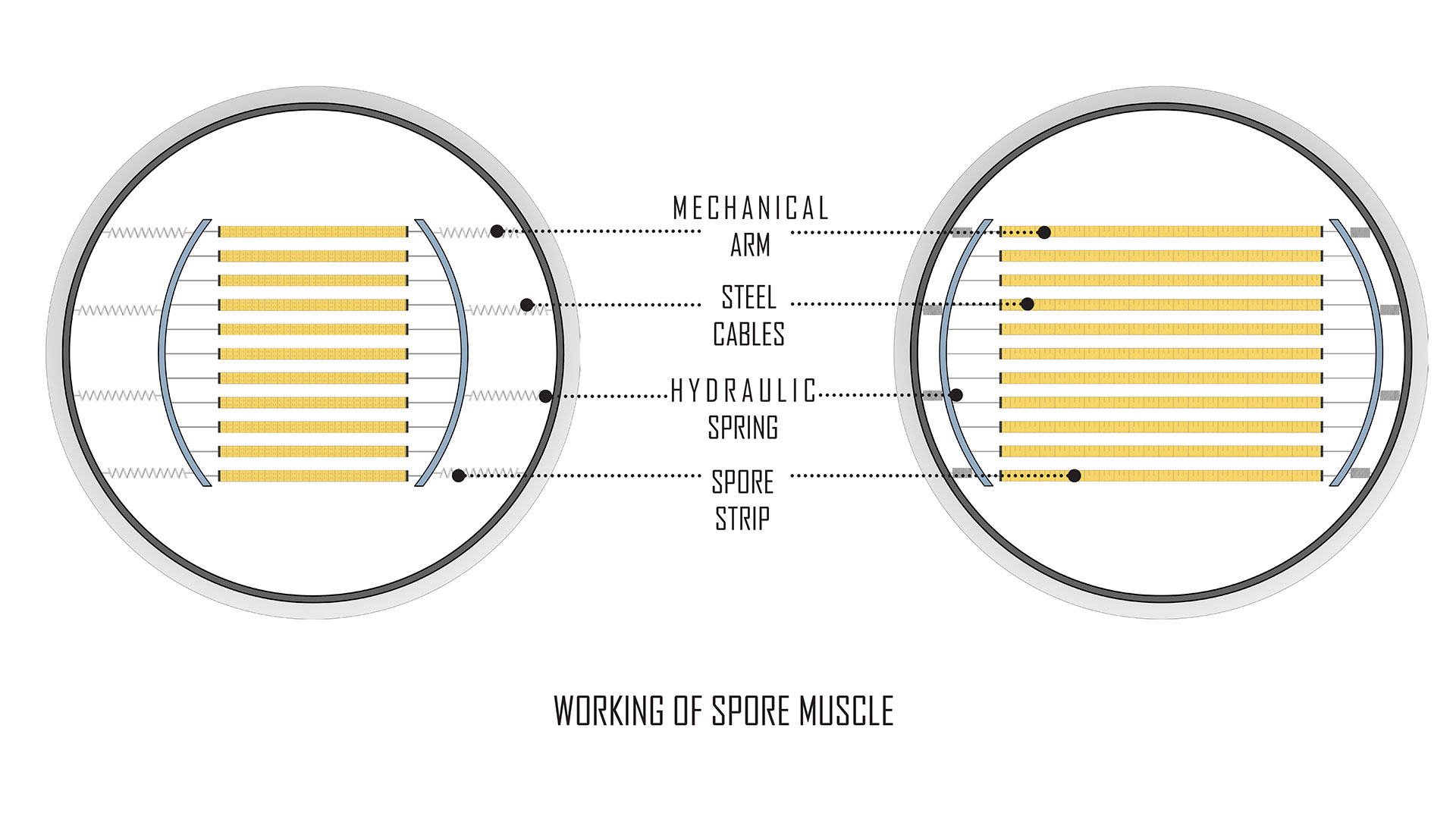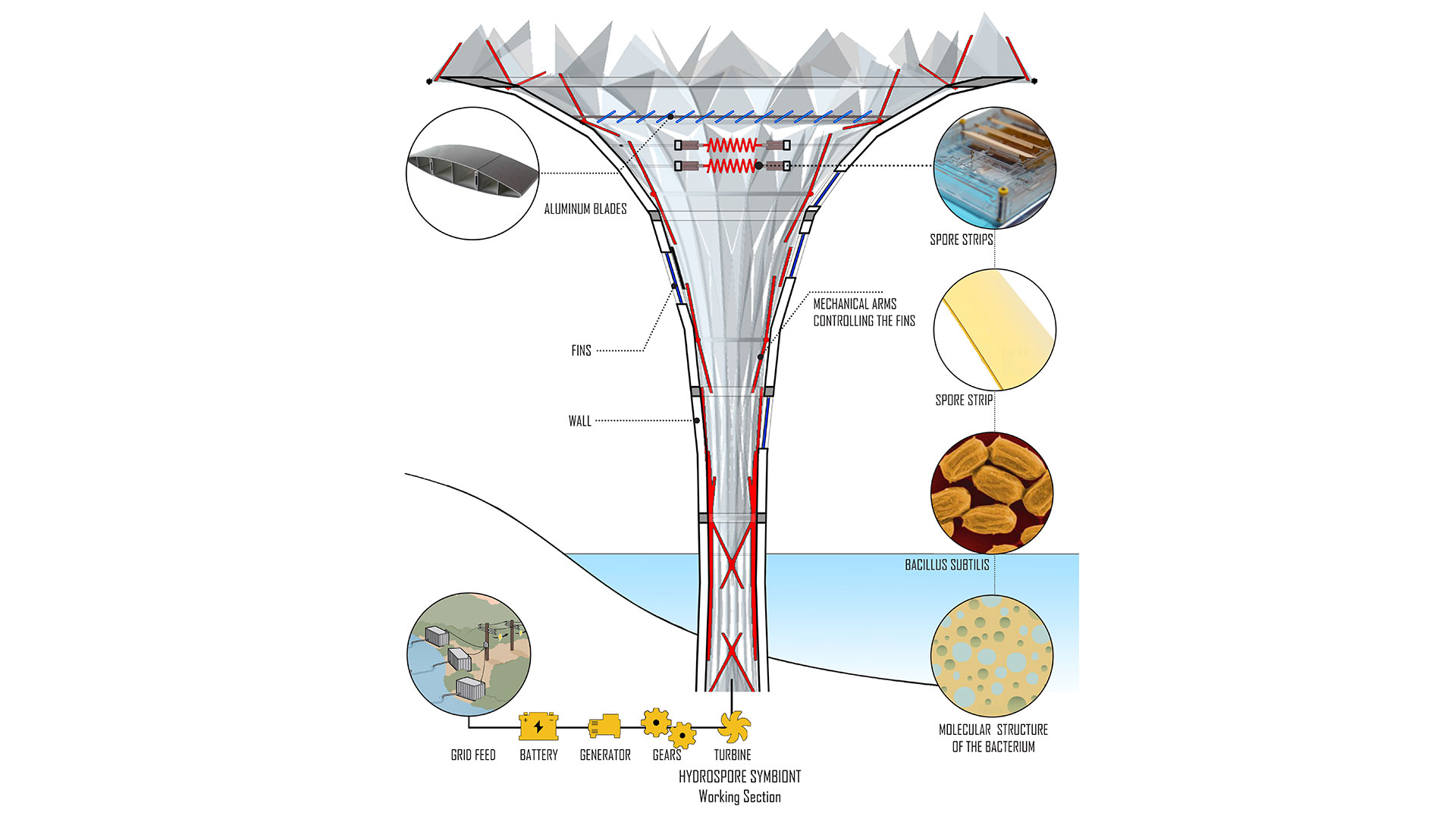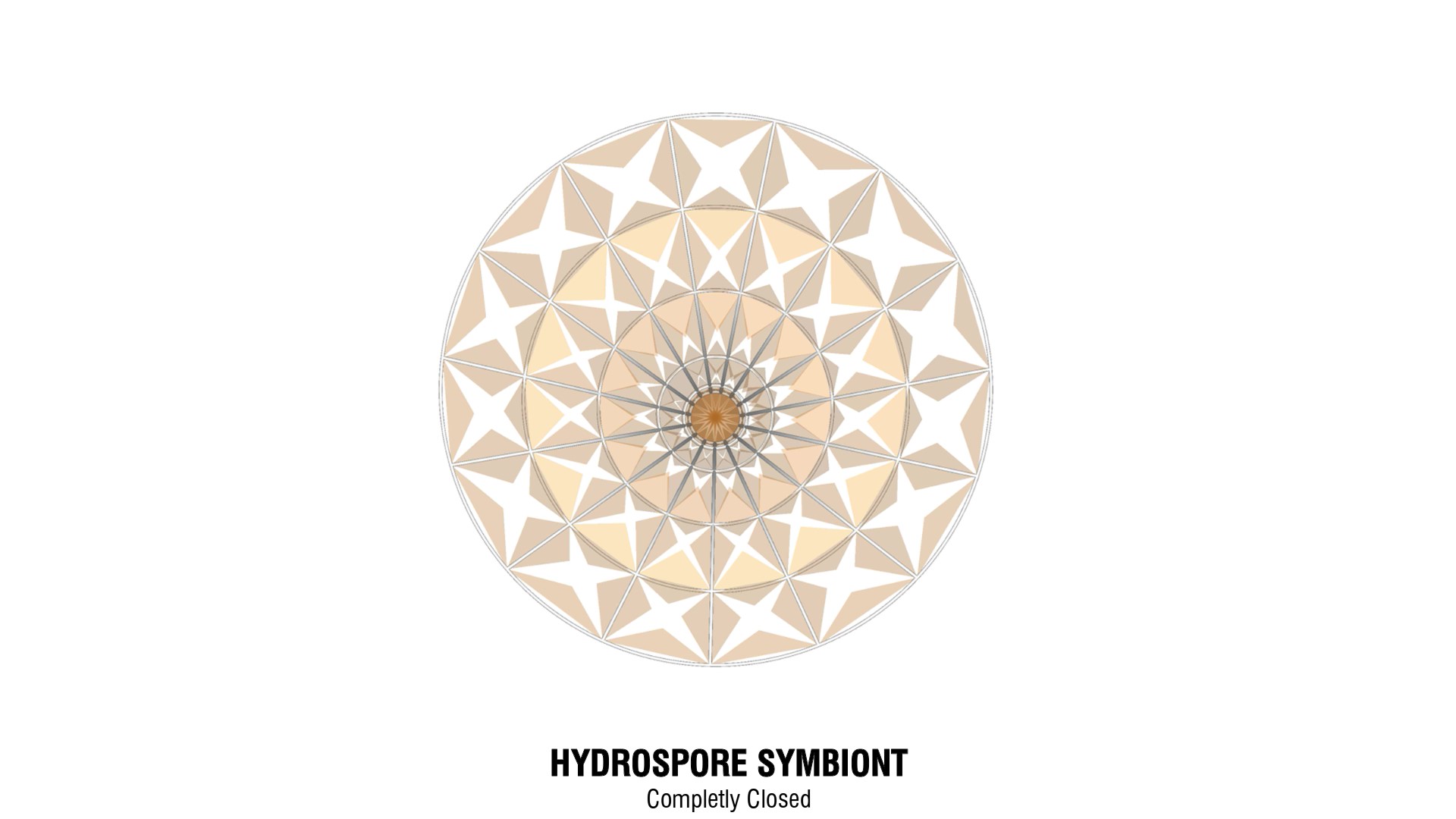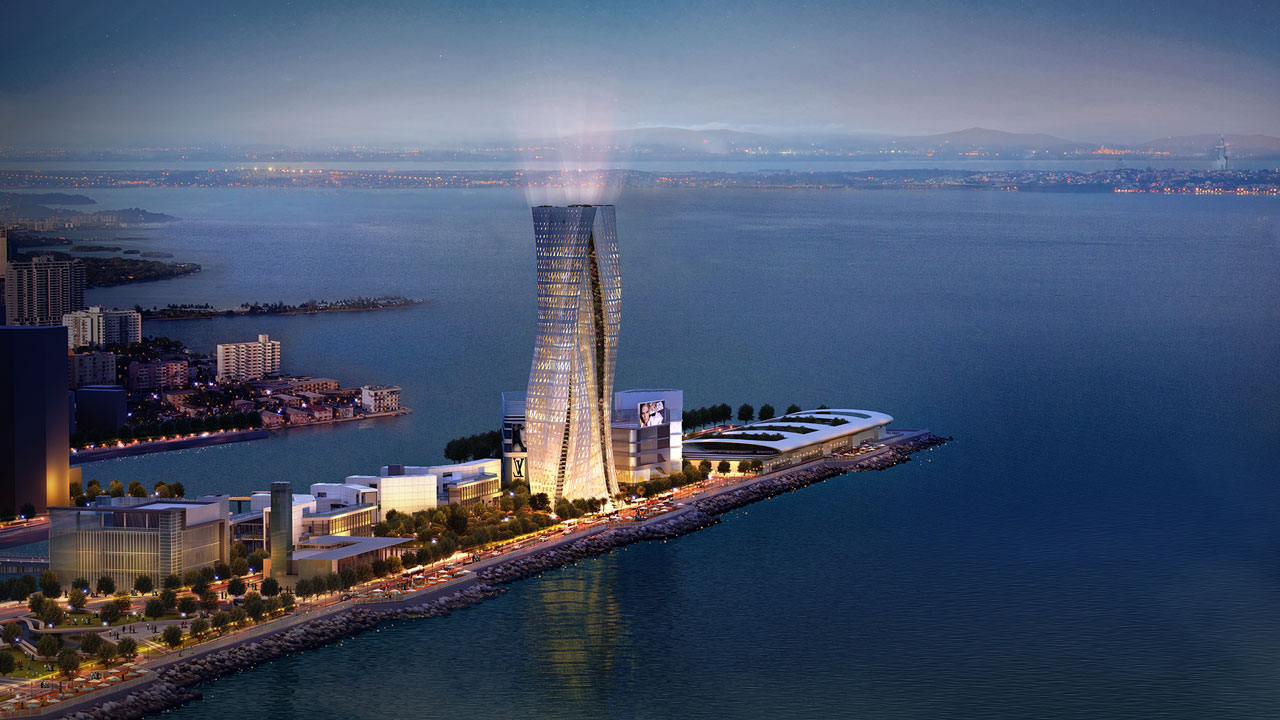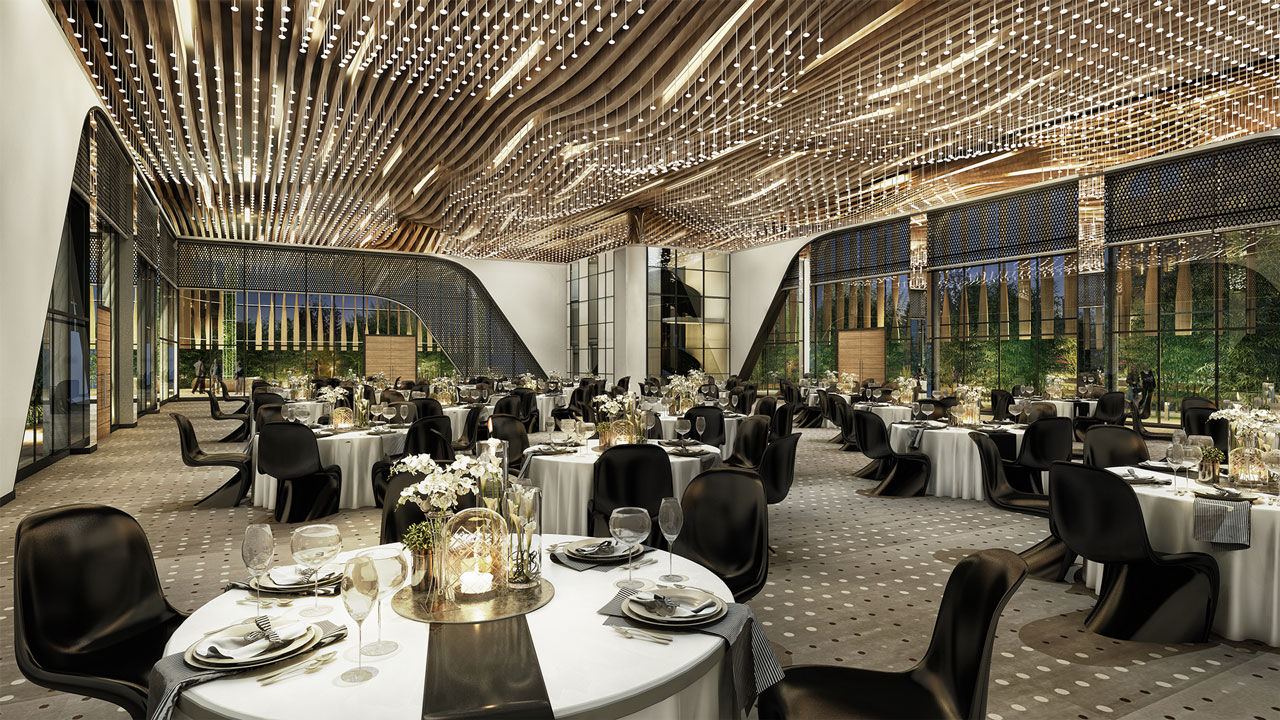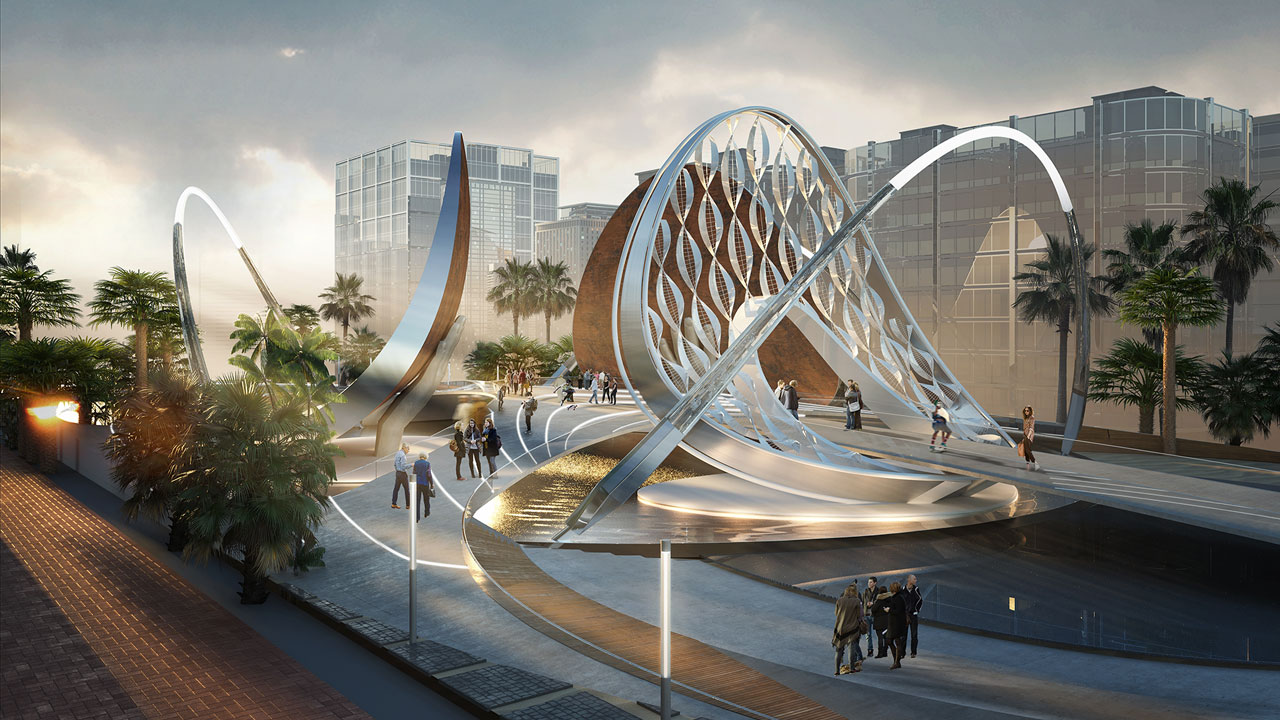HYDRASPORE SYMBIONT
Renewable Evanescence
LOCATION
St Kilda Triangle, Melbourne
SKILLS
Architecture, Concept, Competition
TYPE
Renewable Land Art
AREA
540865 sq.ft (50248 sqm)
CLIENT
State of Victoria & Land Art Generator Initiative
The Hydra-Spore vertical structure is made of concrete and reinforced steel that rises upto 20 m with varying diameter (namely 10m,15m & 20m) and stand over a body of water 5 meters deep. The main energy generating ring is located at the neck of the structure over the water body. The main crescent shaped mechanical steel arms hold the engineered acrylic strips which comprise of spores connected to galvanized cables. The two mechanical arms attach to hydraulic springs that move with the spores that expand when they absorb moisture and contracts when they dry. This forms the heart of the engine and the mechanical muscle is driven like a piston as the humidity of the surrounding air increases because of the evaporation that takes place both inside and outside the structure. The structure is cladded in acrylic panels that act as a fin. The total surface area of water available is 25,619 sq.m that comprises the energy farm.
The inspiration behind Hydra-Spore Symbionts is based on research by Scientists at Columbia University led by biophysicist Ozgur Sahin, who have been developing devices that have the potential to generate power from evaporation. The device generates electricity from the energy produced by bacterial spores known as Bacillus subtilis, which can push and pull other objects with response to humidity, with significant amount of energy. When the spores reach maximum expansion, the acrylic panels open, allowing the water vapor to escape. Eventually, the humidity reduces which results in the spore’s contraction, causing the fins to close. This closing of the fins stops further vapors from moving out, thereby allowing vapor to build up within the column. The expansion and contraction of these spore strips lead to the production of work which is converted to mechanical energy and then into electrical energy through a generator.
An approximate 897.7 MWh of electricity is generated annually by mechanical energy produced by the spore engine from evaporation. From the studies and experiments run by the referenced group of scientists, we can assume the power available from water surfaces in regions like Melbourne are up to 3-4W/m2. Given this, the net energy produced by one large Hydra-Spore Symbiont is estimated at 11 MWh. The average electricity consumed by a home in Victoria, is approximately 6MWh. Hence, the Net energy produced annually can electrify up to 150 homes in cities like Melbourne.

